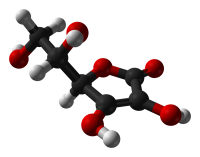Why identical copying is unnecessary for foodsynthesis
With the term "food structure irrelevancy gap" here on this wiki we will refer to a size range in food in which human bodies do not care about the structure of the food. This is a size range where in the artificial synthesis of food there is the freedom to arrange the foods constituent molecules completely differently than the way they are structured in conventionally produced food.
The three size levels of food
Atomic scale
At the atomic scale a human body very much cares which chemical elements are included in the food and in which way atoms of these chemical elements are bond to one another. This is what makes food healthy tasty colorful and durable.
Micro scale
At the microscale the structure of food is pretty much irrelevant to a human body. These structures get destroyed early on in the digestion process or even earlier in the process of cooking. Also human senses can't perceive the fine details of the mechanical properties of the food (the foods texture) on this level. So there is no reason that motivates the replicating of inter-cellular structures in food meant for ingestion.
Attempting robotic mechanosynthetic pick and place synthesis of (necessarily deep frozen) the structures found in living cells seems extremely difficult or rather borderline impossible. More detailed discussion of this matter can be found ion the main page: (TODO: find appropriate title)
Macro scale
At the macroscale again we very much care for the makeup of our food. The irrelevancy gap on the microscale below most likely opens up enough design freedom to emulate the mechanical properties (the texture) of food sufficiently well to perfectly fool human senses. (The principle of metamaterials). If that is desirable or not is a separate matter. Faking something like an apple is likely pretty difficult. Making Something like a cake should be very easy. (TODO: add image of an apple and a cake)
Related
In the synthesis of tissue for medicine there's no such irrelevancy gap.

